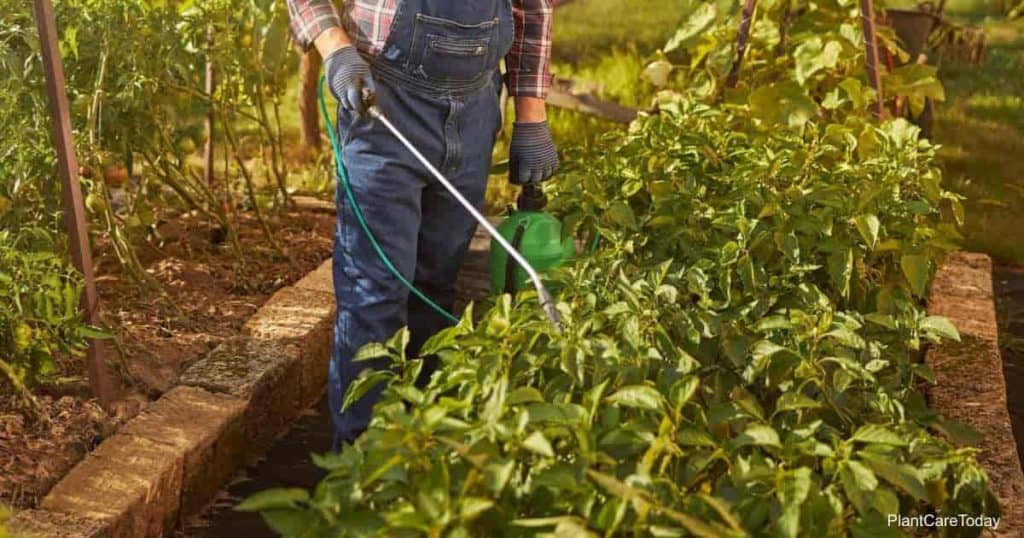Neem oil is a potent ally in the fight against unwanted or damaging insects both indoors and outdoors.
The Neem oil is deadly to at least 200 common garden pests and may kill as many as 600 through its active ingredient, Azadirachtin.

This natural insecticide is derived primarily from the seeds of Azadirachta indica but is present in all parts of the plant.
The seeds (and sometimes leaves or fruit) are cold-pressed to extract the natural oil, known as crude or raw neem oil. Then, neem cakes are made from the solids.
Azadirachtin may be extracted from the crude neem oil for use in other products, leaving clarified hydrophobic neem oil.
At no point in the manufacturing process is there waste. Both forms of neem oil are used extensively to treat the plant uniquely by creating soil drenches and foliar sprays.
What Are Some Good Neem Oil Spray Recipes and Drenches
Numerous insecticidal recipes can be made at home using neem oil, from soaks to soaps, with as little as three ingredients.
It is always best to test a small area of the plant the day before, ensuring no adverse reaction. When you apply Neem, spray the entire plant, including the undersides of leaves.
Neem Oil Spray Recipe
Perhaps the most common form of neem pest control is the neem foliar spray.
Foliar sprays use clarified hydrophobic neem oil at low concentrations, allowing them to dissipate quickly with no residue.
This means they kill the bugs they encounter but pose no threat to pollinators or beneficial insects.
Clarified hydrophobic neem oil may be purchased online or in garden centers, most commonly in concentrations ranging between .5 and 2% percent.

To make the spray, add 1 teaspoon of your emulsifier to a gallon of warm water and stir gently to blend the soap in.
Next, add 4 tablespoons of your clarified neem oil to the emulsified water.
Additional ingredients, such as essential oils or substituting insecticidal soap for the emulsifier, are popular variations of this basic recipe.
Application is a simple matter of spraying the plant and soaking every part evenly.
Be sure to get the undersides of leaves and any joints or crevasses, as these are often hiding spots for pests.
If you’re spraying an outdoor plant, make sure to treat it at either dusk or dawn when most beneficial insects aren’t active.
Neem foliar sprays generally dissipate in 45 minutes to 1 hour.
Neem Oil Soil Drench Recipe
The Neem soil soak recipe is similar to its foliar spray sibling but has a very different application and lifespan.
To make your soak, begin with a gallon of emulsified water and add 100% percent cold-pressed crude neem oil.
Make sure the oil is cold-pressed, as it loses potency when exposed to heat.
To apply, simply pour 2 to 4 cups of the soak directly into the soil and allow the plant to drink.
The plant absorbs the Azadirachtin into its circulatory system, becoming a systemic insecticide lasting up to 22 days.
The toxins are ingested by any insect that attempts to eat or pierce the plant, meaning this method remains safe for use around beneficial insects and is also safe for use around earthworms.
Neem Oil Soap Recipe
While neem foliar sprays technically count as insecticidal soap, making a more potent version to store for future use is possible.
Mix 15 ounces of neem oil and 2.1 ounces of lye soap with 3 ounces of water in a heat-safe glass or porcelain bowl.
Slowly heat the mixture, stirring with a steel utensil until it becomes sticky.
Avoid using wood, aluminum, or plastic when working with the soap.
Allow the resulting pound of soap to cool completely and store it in a dry place.
To use your neem insecticidal soap, add 5 tablespoons of the soap in a gallon of boiling water to dissolve it and allow it to cool, then add to your sprayer and apply as you would a foliar spray.
Note that this soap mix will leave a residue, so avoid getting any on flowers to prevent accidental bee deaths.
Neem Oil Garden Spray Recipe Rules
When using neem oil in the garden, it’s important to use only pure neem recipes, such as the basic foliar spray and soil soak, if you keep beneficial insects in your garden.

Never treat your plants at times when pollinators are active, as they may come into contact with the Azadirachtin before it dissipates if used topically.
While the presence of Azadirachtin isn’t dangerous to humans or pets, the added chemicals aren’t something you want in your food.
Do not spray plants with edible flowers, fruits, or vegetables on the day of harvest. Likewise, it’s best not to use a soil soak three weeks before harvest.
Finally, always be careful not to get neem oil on sprouts or saplings, as the oil can cause chemical burns on sensitive new growth.
